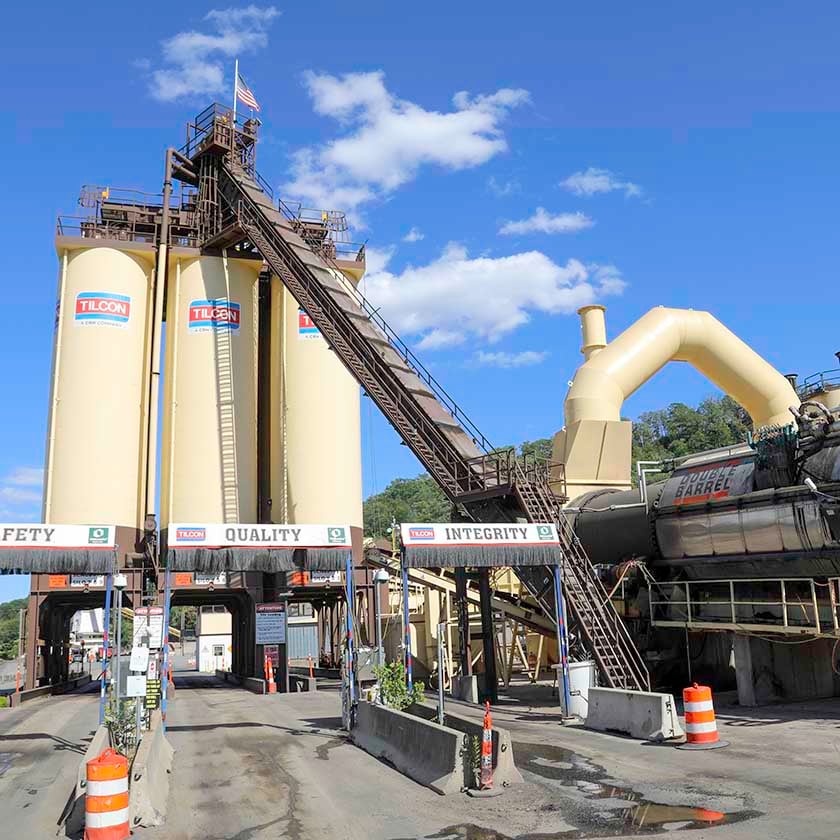Reimagine Your Space: Hot Mix Asphalt Paving for Angled Parking Lot Projects
Reimagine Your Space: Hot Mix Asphalt Paving for Angled Parking Lot Projects
Blog Article
Opening the Secrets of Warm Mix Asphalt Modern Technology
Discovering the midsts of warm mix asphalt technology discovers a globe where precise processes and exact formulas converge to form our roadways and framework. The combination of binders, fillers, and accumulations isn't just a building and construction job but a strategic orchestration of toughness and efficiency.
Significance of Warm Mix Asphalt
Warm Mix Asphalt plays an important role in modern framework growth as a result of its toughness and cost-effectiveness. As the most commonly used leading material for roadways, highways, and car park, Warm Mix Asphalt uses a variety of benefits that add to its significance in construction jobs. One crucial advantage is its ability to hold up against rush hour lots and extreme climate condition, offering a resilient and trustworthy surface for transport networks. Furthermore, Hot Mix Asphalt is cost-effective in both preliminary building and construction and lasting maintenance, making it a favored selection for lots of framework jobs.
The resilience of Warm Mix Asphalt stems from its make-up, which includes aggregates, binder, and filler materials that are carefully picked and mixed to meet specific efficiency requirements. Overall, the value of Hot Mix Asphalt in framework development can not be understated, as it proceeds to be a foundation of contemporary building and construction practices.
Elements of Asphalt Mixes
The structure of asphalt mixes is composed of carefully picked accumulations, binder, and filler materials that are critical for attaining particular performance needs. Aggregates are the primary element of asphalt blends, giving stamina and stability. These accumulations can be all-natural, such as crushed rock or smashed stone, or artificial, like recycled products from old pavements. The binder, typically bitumen or asphalt concrete, holds the accumulations with each other and offers flexibility and resilience to the mix. The option of the binder is important as it straight affects the mix's efficiency in different weather. Fillers, such as moisturized lime or Portland cement, are used to improve the mix's workability and aging resistance. Angled Parking.
The combination and proportion of these components play a substantial role in identifying the quality and performance of the asphalt mix. Engineers very carefully make the mix to fulfill details needs, considering factors like traffic volume, climate conditions, and pavement lifespan. Proper selection and harmonizing of aggregates, binder, and fillers are essential for creating durable, long-lasting asphalt pavements.
Combining and Manufacturing Strategies

As soon as the aggregates are selected, the binder, frequently asphalt cement, is included in bind the products with each other. The binder's top quality and amount significantly impact the mix's resistance, versatility, and stamina to ecological elements. Furthermore, fillers like hydrated lime or Rose city cement might be included to boost details features of the asphalt mix, such as its workability or dampness resistance.
Throughout production, the aggregates and binder are warmed, commonly in between 250-325 ° F(121-163 ° C ), to assist in mixing and ensure correct layer of the accumulations. The mixing process has to be detailed to accomplish a homogeneous mixture that advertises the preferred performance features of the asphalt. Different techniques, such as set blending or drum mixing, are used to accomplish consistent and high-quality asphalt mixes for building projects.
Variables Affecting Asphalt Performance
Variables influencing asphalt performance incorporate a variety of variables that impact the toughness, longevity, and general top quality of asphalt sidewalks. One essential aspect is the top quality of materials utilized in the asphalt mix.

Ecological conditions additionally influence asphalt efficiency. Temperature variants, dampness infiltration, and website traffic tons can all influence the structural honesty of the pavement. Style factors to consider, such as pavement density and drainage, are necessary in ensuring the lasting efficiency of the asphalt pavement. By very carefully considering these designers, service providers and elements can optimize asphalt performance and improve the solution life of pavements.
Lasting Practices in Asphalt Modern Technology

Additionally, the development of warm-mix asphalt (WMA) technologies has actually obtained grip over the last few years. WMA enables for the production and positioning of asphalt blends at lower temperatures contrasted to typical hot-mix asphalt, causing decreased energy intake and greenhouse gas exhausts. The use of permeable asphalt mixes can aid alleviate stormwater runoff concerns by enabling water to infiltrate via the pavement and right into the ground, promoting all-natural water filtering and reenergize processes. By implementing these lasting practices, the asphalt sector can contribute to constructing a much more resilient and eco friendly framework network.
Conclusion
In final thought, warm mix asphalt modern technology plays an important function in modern-day framework development due to its toughness and cost-effectiveness. By carefully balancing elements, utilizing appropriate blending strategies, and taking into consideration numerous variables, engineers can create top quality asphalt mixes that endure rush hour tons and extreme weather condition problems. Accepting lasting methods, such as utilizing recycled products and warm-mix modern technologies, additionally improves the ecological kindness of asphalt innovation.
Mixing and production techniques in warm mix asphalt modern technology entail the exact combination and processing of accumulations, binder, and fillers to produce a high-performance and resilient asphalt mix.Factors affecting asphalt efficiency include a variety of variables that impact the resilience, longevity, and total top quality of asphalt pavements. Sustainable techniques in asphalt modern technology include directory different initiatives intended at minimizing the environmental impact of asphalt manufacturing and paving processes. By including recovered asphalt pavement (RAP) and recycled asphalt tiles (RAS) right into new asphalt blends, the industry can significantly minimize the usage of raw materials and power, while additionally lowering landfill waste.
WMA enables for the manufacturing and placement of asphalt blends at lower temperatures compared to typical hot-mix asphalt, resulting in lowered power intake and greenhouse gas exhausts.
Report this page